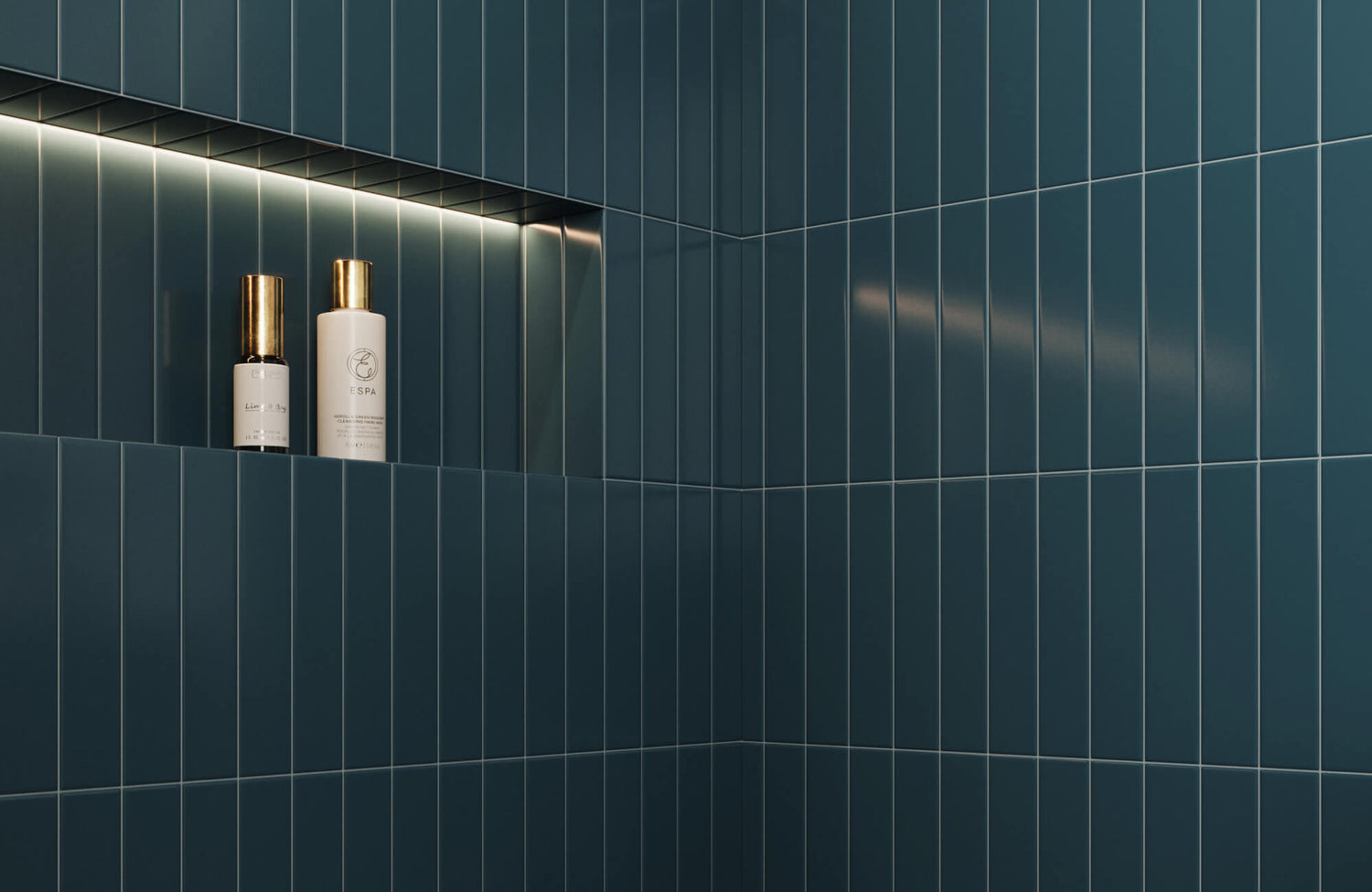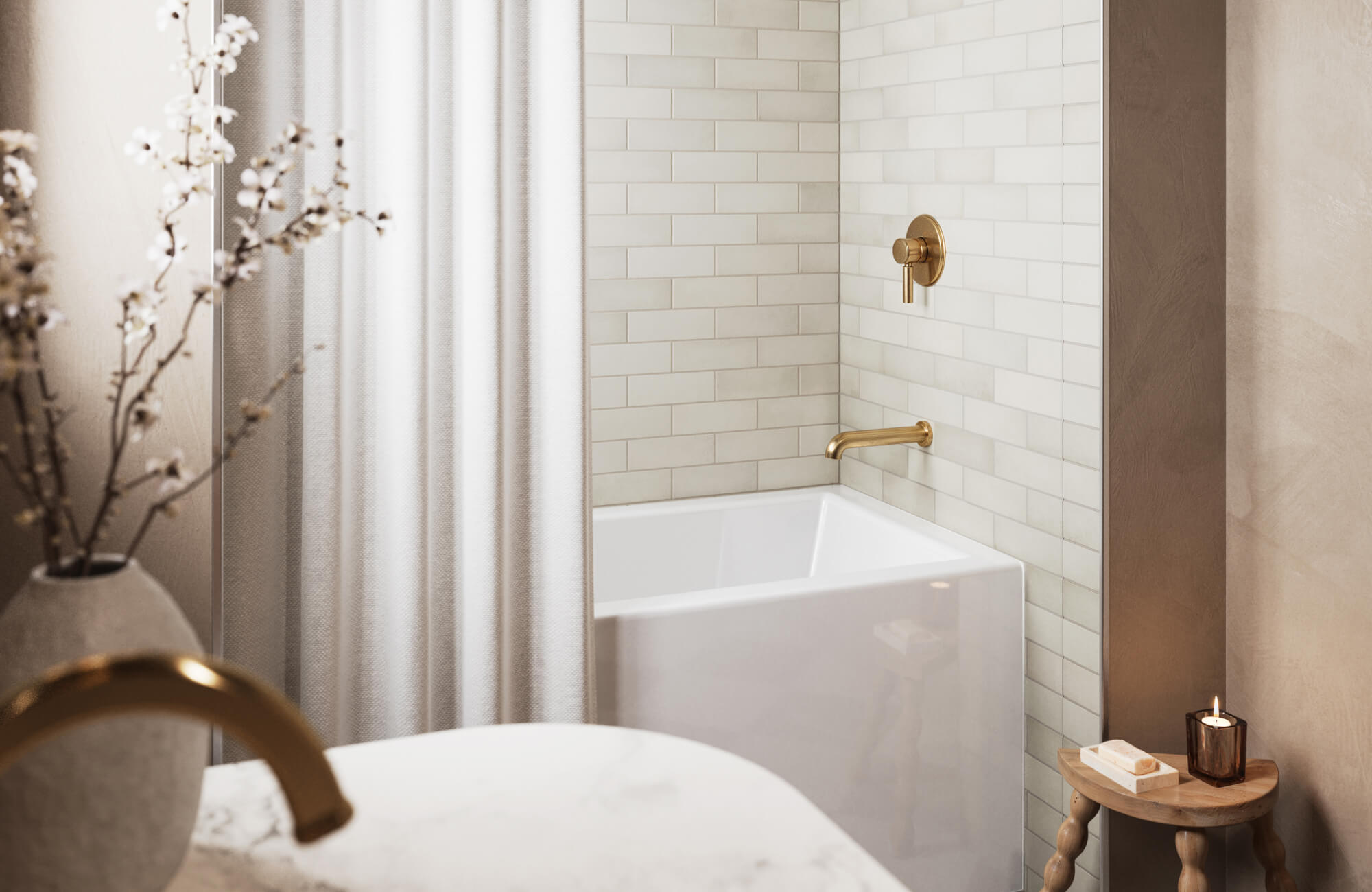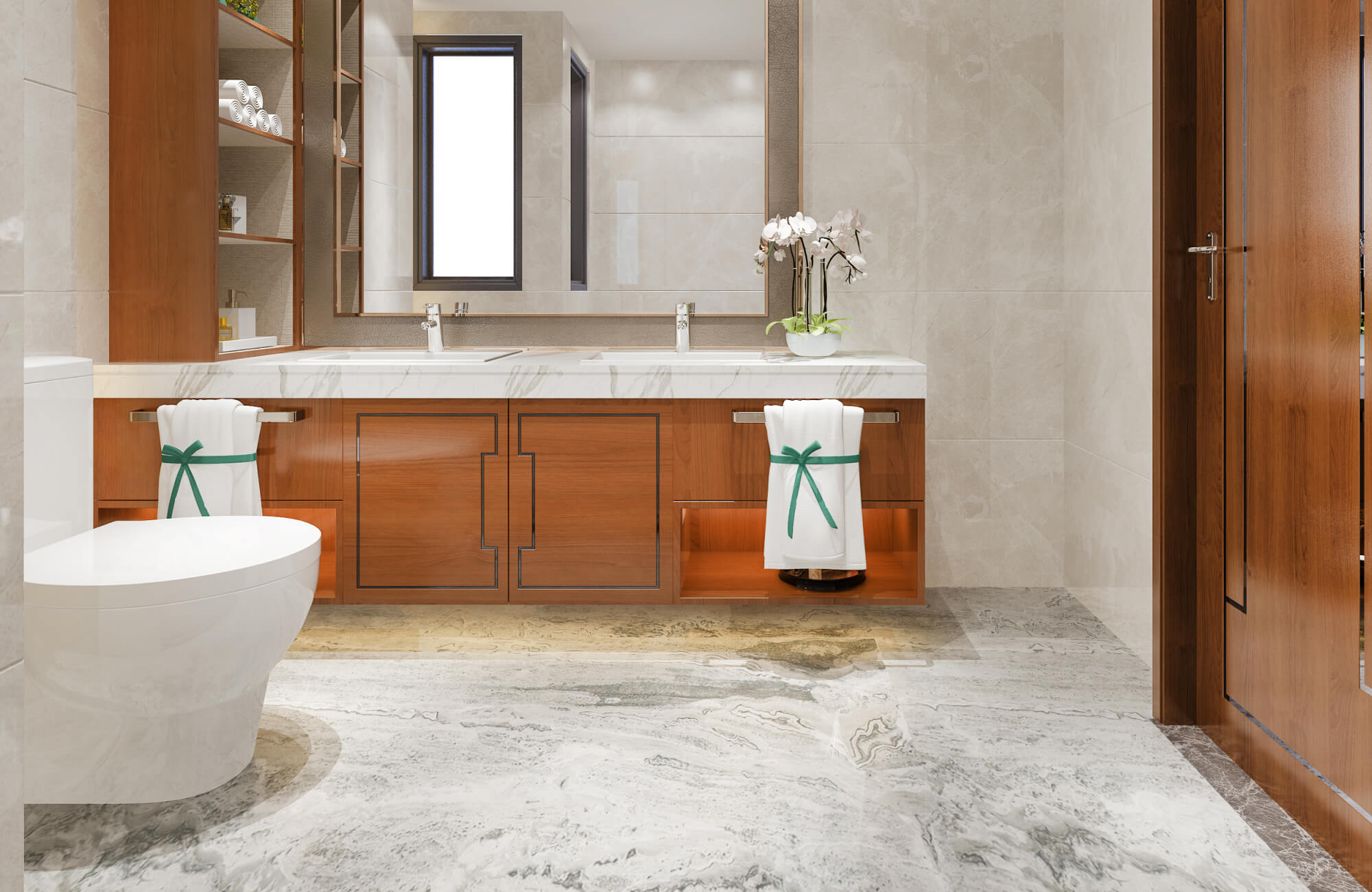Subway tile, a classic in interior design, has long been popular for its simple, rectangular form and clean lines. This versatile tile style works in various settings, from kitchen backsplashes to bathroom walls. As trends evolve, so do the preferred sizes and styles of subway tile, with recent shifts towards larger formats that embrace minimalism. However, traditional sizes retain their appeal, especially in smaller spaces where they add elegance and sophistication.
This article explores current trends in subway tile sizes and their impact on design, covering classic, contemporary, and innovative options. We’ll also examine layout choices, materials, colors, and future trends to help you select the right subway tile for any space.

The Classic Subway Tile
The classic 3” x 6” subway tile has been a staple in design for decades, admired for its clean lines, balanced proportions, and versatility. It complements traditional and modern spaces, offering a subtle elegance that adapts to various styles. This size works well in layouts like grid, stacked, or herringbone patterns, and its simplicity provides a versatile backdrop for contrasting grout or monochromatic designs. Its enduring popularity lies in its ability to enhance large and small spaces without overwhelming the aesthetic.

Other Subway Tile Sizes
Though the 3” x 6” subway tile remains a favorite, emerging trends have introduced alternative sizes, offering new opportunities to refine and elevate interiors. These options cater to both traditional tastes and those seeking contemporary updates.
Small Subway Tiles
Small subway tiles, such as 2” x 6” and 3” x 8”, add detail and depth to compact spaces or serve as bold accents in larger areas. Their dimensions introduce texture and invite creative layouts, including mini herringbone or basketweave patterns. Ideal for backsplashes, powder rooms, or accent walls, these tiles bring dynamic character without overwhelming the space.
Medium Subway Tiles
Medium subway tiles, such as 3” x 10” or 4” x 12”, offer a modern update to the classic 3” x 6” size. Fewer grout lines mean lower maintenance and a cleaner visual, while their balanced proportions fit easily into both traditional and modern interiors. Whether laid horizontally to stretch a room or vertically to heighten ceilings, medium subway tiles are a go-to choice for subtle, stylish transformations currently favored in kitchens, bathrooms, and beyond. They complement various layouts and their streamlined look enhances minimalist designs, adding subtle elegance to understated spaces.
Large Subway Tiles
Larger subway tiles, such as 4” x 16” and 6” x 24”, are increasingly sought after in minimalist, open-concept designs. They minimize grout lines, resulting in a smooth, uninterrupted surface that feels both modern and luxurious. Perfect for today’s expansive kitchens, streamlined bathrooms, and cohesive living areas, these larger formats create the illusion of more space and exude a high-end finish—especially when rendered in materials like porcelain or marble.
For example, the Jaden 2.5x16 Glossy Ceramic Tile in Eggshell, as displayed in the photo above, demonstrates one of the latest trends: elongated shapes that draw the eye upward. Its glossy surface and subtle off-white shade also enhance natural light, lending a fresh, polished look. Paired with warm wood cabinetry and simple fixtures, these tiles reflect the current push toward designs that are simultaneously modern, inviting, and effortlessly stylish.

Different Subway Tile Materials
Selecting the right material for subway tiles affects both the aesthetics and functionality of a space. From classic ceramics to modern glass and durable porcelain, each material offers unique benefits, allowing for a design that meets both practical and stylistic needs.
Porcelain Subway Tiles
Porcelain subway tiles are ideal for busy or heavily-exposed areas like bathroom floors, outdoor kitchens and pools, thanks to their durability and resistance to water, stains, and scratches. This non-porous material is also versatile, offering finishes that replicate natural materials like marble or wood.
For example, the Aniston 3x12 Polished Porcelain Tile in Calacatta Quarzite (shown in the picture above), blends the elegance of marble with the durability of porcelain. Its polished surface and subtle Calacatta-inspired veining create a timeless look perfect for any space. Their 3x12 size also brings a contemporary touch to the classic subway tile, allowing for creative layouts such as staggered or vertical patterns that enhance depth. When paired with materials like warm wood or stainless steel, these tiles achieve a cohesive design that suits both traditional and modern spaces.
Ceramic Subway Tiles
Ceramic subway tiles are favored for their classic appeal and affordability. With glazed surfaces, they are perfect for low-contact areas like backsplashes, offering moisture resistance and easy maintenance. While not as durable as porcelain, ceramic subway tiles come in a wide range of colors and textures, making them a flexible option for various design styles.
Glass Subway Tiles
Glass subway tiles add a sleek, reflective quality that brightens a room and creates a sense of space. These tiles work well for accent walls, contributing a touch of elegance and sophistication to modern interiors. While their glossy finish enhances the design, they do require regular maintenance to prevent fingerprints and smudges.

Creating Unique Designs with Layout, Color, and Format
The way subway tiles are arranged, colored, and textured can transform any room, turning basic tile installations into striking design elements. Thoughtful choices allow for endless customization, enabling you to achieve a style that truly reflects your personality and complements your room’s overall aesthetic.
Classic Grid and Running Bond
The classic grid layout and stacked bond arrangement are popular for their clean, minimalist style. In a grid layout, subway tiles are arranged in a precise, vertical or horizontal linear pattern, making it suitable for both traditional and modern designs. In contrast, the running bond pattern, often seen in brickwork, staggers each subsequent row of subway tiles to create a subtle sense of movement and visual interest that works well in kitchens and bathrooms. Both layouts are versatile and can be enhanced by thoughtful grout choices.
Herringbone and Diagonal Patterns
For a design that feels dynamic and visually engaging, herringbone and diagonal patterns offer an excellent choice. The herringbone pattern, with its zigzag, V-shaped arrangement, introduces depth and a sense of flow that naturally draws the eye. It works well with both neutral and bold tile colors, making it adaptable to a variety of styles. Similarly, diagonal layouts, positioned at a 45-degree angle, enhance accent walls or backsplashes by adding subtle movement and making spaces appear more expansive.
Color Choices
The color of subway tiles also plays a key role in shaping a room’s ambiance. Neutral tones like white, grey, and beige create a versatile and understated backdrop, blending effortlessly with various interior styles. These shades pair well with different grout choices—light grout fosters a seamless appearance, while darker grout highlights the tile edges for a more defined look. For a more eye-catching option, vibrant hues such as blue, green, or yellow can bring character and energy to a space, transforming a plain wall into a standout feature. These bolder colors work especially well on accent walls, adding a focal point that enhances the room without feeling overpowering.
Different Formats
Mosaic subway tiles bring a contemporary twist to the classic subway tile aesthetic, offering a design-friendly, efficient solution for detailed layouts. Unlike traditional subway tiles installed piece by piece, these mosaics are mounted on mesh sheets, ensuring precise alignment and reducing installation effort. This format is perfect for intricate spaces like backsplashes, shower walls, and recessed niches where symmetry and precision are key.
As seen in the image above, the Astrid 3x6 Polished Porcelain Mosaic Tile in Sand exemplifies this approach. Its subtle beige tones with a polished porcelain finish create a soft, luxurious backdrop, seamlessly blending with modern black hardware and elegant marble accents. Their mosaic arrangement also achieves the timeless subway tile look while adding ease to installation.
To make the selection process even easier, Edward Martin’s augmented reality (AR) tool allows you to visualize how different subway tile options will look in your space. By previewing tile colors, sizes, and layouts in real time, you can confidently choose the perfect style to suit your design vision.
The Future of Subway Tile Trends
As interior design evolves, subway tiles are incorporating innovative technologies and sustainable practices. One notable trend is the shift toward eco-friendly production, with manufacturers increasingly using recycled materials and energy-efficient methods. Tiles crafted from natural materials like clay or stone not only minimize environmental impact but also offer aesthetics that harmonize with minimalist and organic design styles.
Edward Martin’s Shea 3x12 Matte Porcelain Tile in Sand highlights this focus on sustainability. Made with 95% locally sourced materials and up to 45% recycled content, it embodies the balance between style and environmental responsibility. Additionally, its durability and versatility ensure it fits seamlessly into a variety of spaces without sacrificing practicality.
As design continues to innovate, smart tiles are also emerging as a key trend, integrating advanced technologies like built-in lighting or temperature sensors. These intelligent features enhance the functionality of subway tiles, allowing them to become interactive elements in modern interiors while maintaining their natural, timeless appeal.
Final Thoughts
Subway tile sizes, ranging from the classic 3” x 6” to larger formats like 6” x 24”, provide flexibility for a variety of design needs. Smaller subway tiles add detail and texture to compact areas, while medium and large subway tiles create a sleek, cohesive look, particularly in open or minimalist spaces. Selecting the right size helps achieve a design that feels balanced and visually appealing, tailored to your style and the room's character.
If you’re interested in exploring various tile colors, layouts, or design options, our team is ready to assist you in finding the perfect match. Whether you’re seeking guidance or detailed product information, we’re here to help you make an informed decision!








